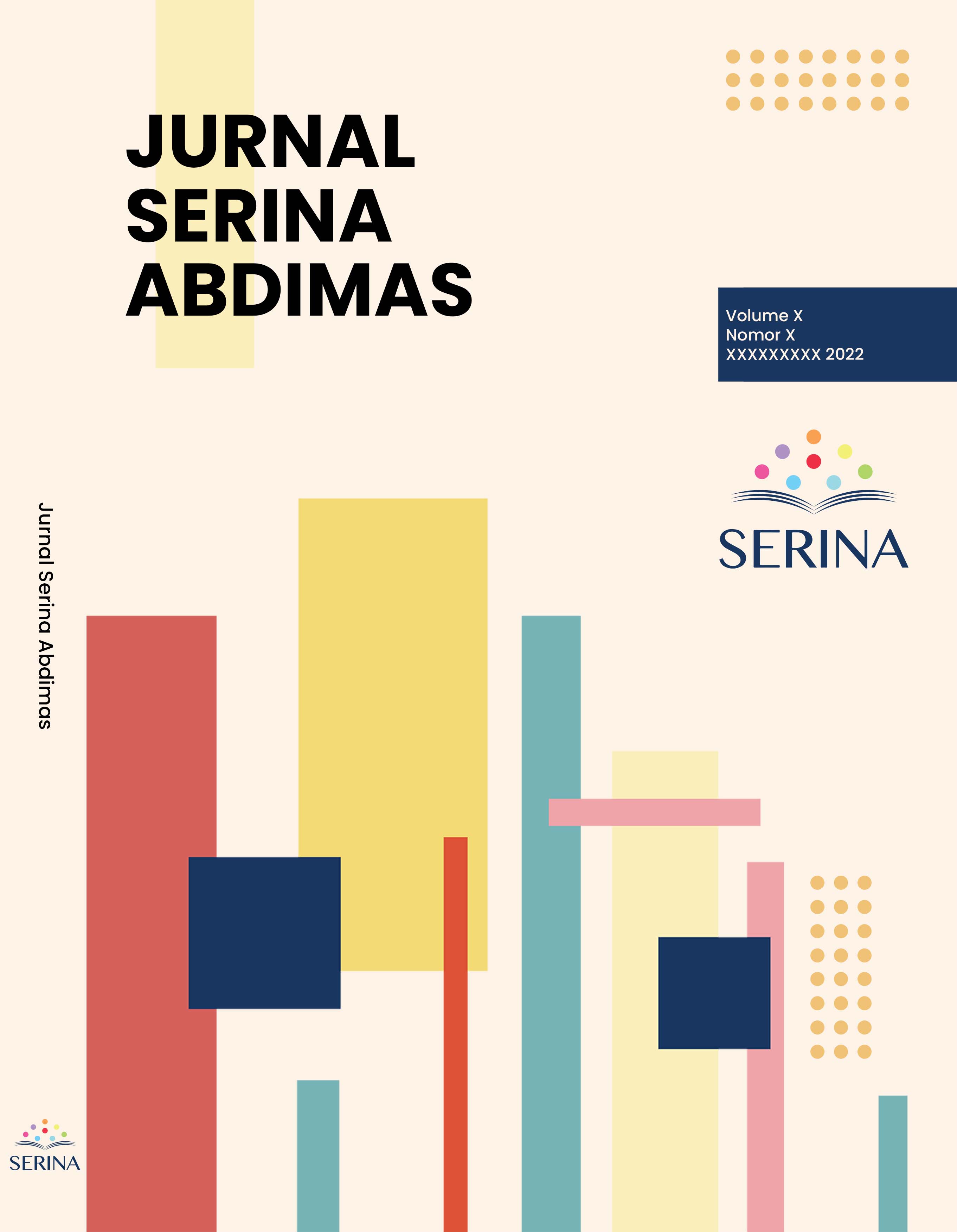MENINGKATKAN PEMAHAMAN PUBLIK TERHADAP ANAK ADHD MELALUI KEGIATAN PENGABDIAN KEPADA MASYARAKAT
Main Article Content
Abstract
Attention-Deficit/Hyperactivity Disorder (ADHD) is the most common mental disorder found in children and is capable of affecting development into adulthood with a characteristic pattern of inattention, hyperactivity, and impulsivity (American Psychiatric Association, 2021). The inherent interaction between parents, teachers, and therapists requires them to have good knowledge and understanding to carry out their role as key informants for ADHD children. In Indonesia itself, public knowledge of this phenomenon seems to be lacking due to the uneven distribution of information. The research team decided to conduct a community service activity in the form of a webinar to increase public understanding and awareness of ADHD children by using pre-test and post-test questionnaires to measure the level of knowledge of participants. The measuring tool uses The Questionnaire of ADHD Knowledge developed by See et al., (2021). The number of participants was 35 people, consisting of 5 male participants and 30 female participants. The results of calculations using the Wilcoxon test obtained a Z value of -3.760 with a significance value (2 tailed) of 0.000. It can be concluded that the results have a positive correlation between giving the webinar and increasing the number of correct post-tests on 35 participants, with negative ranks = 6, positive ranks = 28, and ties = 1.
ABSTRAK
Attention-Deficit/Hyperactivity Disorder (ADHD) adalah gangguan mental yang paling umum ditemukan pada anak-anak dan mampu mempengaruhi perkembangan hingga dewasa dengan pola karakteristik tidak dapat memusatkan perhatian, hiperaktivitas, dan impulsivitas (American Psychiatric Association, 2021). Interaksi yang melekat antara orang tua, guru, dan terapis mengharuskan mereka memiliki pengetahuan dan pemahaman yang baik untuk menjalankan peran sebagai informan kunci anak ADHD. Di Indonesia sendiri, pengetahuan masyarakat terhadap fenomena ini tampaknya masih kurang karena penyebaran informasi yang tidak merata. Tim pelaksana memutuskan untuk melakukan suatu kegiatan pengabdian kepada masyarakat dalam bentuk webinar untuk meningkatkan pemahaman serta kesadaran publik terhadap anak ADHD dengan menggunakan kuesioner pre-test dan post-test untuk mengukur tingkat pengetahuan partisipan. Alat ukur menggunakan The Questionnaire of ADHD Knowledge yang dikembangkan oleh See et al., (2021). Jumlah partisipan yakni 35 orang, terdiri dari 5 partisipan laki-laki dan 30 partisipan perempuan. Hasil perhitungan menggunakan Uji Wilcoxon diperoleh nilai Z sebesar -3,760 dengan nilai signifikansi (2 tailed) sebesar 0,000. Maka dapat disimpulkan bahwa hasil berkorelasi positif antara pemberian webinar dengan peningkatan jumlah benar post-test pada 35 partisipan, dengan nilai negative ranks = 6, positive ranks = 28, dan ties = 1.
Article Details

This work is licensed under a Creative Commons Attribution-NonCommercial-ShareAlike 4.0 International License.
References
Adiputra, I. M. S., Sutarga, I. M., & Pinatih, G. N. I. (2015). Risk factors of attention deficit
hyperactivity disorder (ADHD) among children in Denpasar. Public Health and Preventive Medicine Archive, 3(1), 21490. https://doi.org/10.24843/PHPMA.2015.V03.I01.P06
American Psychiatric Association (APA). (2022, June). What is
ADHD? https://www.psychiatry.org/patients-families/adhd/what-is-adhd
American Psychological Association (APA). (2019, November 15). ADHD increasing
among adults. https://www.psychiatry.org/news-room/apa-blogs/adhd-increasing-among-adults
Awiria, & Dariyanto. (2020). Faktor-faktor penyebab anak menjadi attention defict
hyperactive disorder di SDN Teluk Pucung 01 Kota Bekasi. Wacana Akademika; Majalah Ilmiah Kependidikan, 4(2), 141–147. http://repository.ubharajaya.ac.id/10356/1/PUBLISH%20ADHD%20WITH%20AWI%20NOVEMBER%202020.pdf
Dwiyanti, D. (2021). Analisis Faktor-Faktor yang Memengaruhi Efektivitas Webinar selama Masa Pandemi Covid-19. Ideas: Jurnal Pendidikan, Sosial, Dan Budaya, 7(2), 67-80.
Feldman, R., Olds, S., & Papalia, D. (2008). Human development. McGraw-Hill Education.
Furman, L. (2005). What is attention-deficit hyperactivity disorder (ADHD)? Journal of Child Neurology, 20(12), 994–1002. https://doi.org/10.1177/08830738050200121301
Paternotte, A., & Buitelaar, J. (2010). ADHD attention deficit hyperactivity disorder
(gangguan pemusatan perhatian dan hiperaktivitas) : Tanda-tanda, diagnosis, terapi serta penanganannya di rumah dan di sekolah (1st ed.). Prenada Media. http://library.fip.uny.ac.id/opac/index.php?p=show_detail&id=4832
Rahmawati, E. N., Rahmawati, W., & Andarini, S. (2014). Binge eating dan status gizi pada
anak penyandang attention deficit/hyperactivity disorder (ADHD). IJHN : Indonesian Journal of Human Nutrition, 1(1), 1-13. https://ijhn.ub.ac.id/index.php/ijhn/article/view/94/0
Riduwan, A. (2016). Pelaksanaan kegiatan pengabdian kepada masyarakat oleh perguruan
tinggi. EKUITAS (Jurnal Ekonomi Dan Keuangan), 3(2), 95.
https://doi.org/10.24034/J25485024.Y1999.V3.I2.1886
The A.D.D. Resource Center (ADDRC). (2013, September 12). DSM-5 criteria for
ADHD. https://www.addrc.org/dsm-5-criteria-for-adhd/
Yochman, A., Ornoy, A., & Parush, S. (2006). Perceptuomotor functioning in preschool
children with symptoms of attention deficit hyperactivity disorder. Perceptual and Motor Skills, 102(1), 175–186. https://doi.org/10.2466/PMS.102.1.175-186
Yunus, K. R. M., & Dahlan, N. A. (2013). Child-rearing practices and socio-economic
status: Possible implications for children’s educational outcomes. Procedia - Social and Behavioral Sciences, 90, 251–259. https://doi.org/10.1016/J.SBSPRO.2013.07.089

